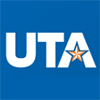The University of Texas at Arlington is a comprehensive public research university located in Arlington, Texas, USA. The following is a detailed introduction to the school:
School Overview
History and Development: The school was founded in 1895 and was originally the Arlington Teachers College. After many changes and developments, it became part of the University of Texas system in 1967 and was renamed the University of Texas at Arlington. It has gradually developed into a large institution of higher learning covering multiple disciplines.
School Size: The school has a large student population with a total of more than 44,000 students, including international students from all over the world, which constitutes a diverse campus culture. The number of faculty and staff is also considerable, and it can provide students with comprehensive education and guidance.
Geographical Location: Arlington is located in the heart of the Dallas-Fort Worth metropolitan area and is one of the important cities in the region. This superior geographical location brings the school a wealth of internship, employment and cultural exchange opportunities, and students can easily access many well-known companies and cultural institutions.
Academic Research
Faculties and Majors: The school has several colleges, including the School of Engineering, the School of Business, the School of Science, the School of Nursing and Health Innovation, the School of Humanities, etc., offering a wide range of undergraduate, master's and doctoral degree programs. The majors cover many fields such as computer science, electrical engineering, mechanical engineering, civil engineering, business administration, accounting, finance, marketing, biology, chemistry, physics, nursing, psychology, sociology, English, history, etc., meeting the academic interests and career development needs of different students.
Teaching Resources: It has a team of highly qualified teachers, many of whom have rich teaching and scientific research experience in their respective fields, and maintain close cooperative relations with enterprises and research institutions, and can provide students with practical guidance and scientific research opportunities. The school is also equipped with advanced teaching facilities and scientific research equipment, such as modern laboratories, computer centers, libraries, etc., which provide good conditions for students' study and research.
Scientific Research Achievements: Remarkable results have been achieved in many research fields, especially in biomedical engineering, materials science, computer science, energy research, etc. The school's scientific research projects have been widely supported by government agencies, enterprises and private foundations, and have made important contributions to the economic and social development of the local and national areas. For example, the research team of the School of Engineering has carried out cutting-edge research in the fields of biomedical imaging and renewable energy technology, and has achieved a series of scientific research results with important application value.
Application for Admission
Undergraduate application: Generally, students are required to graduate from high school and have a high school GPA that meets certain standards, usually around 3.0. In terms of language requirements, the TOEFL Internet-Based Test (iBT) generally requires a score of 79 or above, and the IELTS requires a score of 6.5 or above. In addition, you need to submit application materials such as letters of recommendation and personal statements. Some majors may also require SAT or ACT scores.
Graduate application: The application requirements for different majors vary, but generally students are required to have a bachelor's degree, and the GPA is usually required to be above 3.0, and some majors may require higher requirements. Language requirements The TOEFL Internet-Based Test generally requires a score of 79 or above, and the IELTS requires a score of 6.5 or above. Most graduate majors also require GRE or GMAT scores, as well as application materials such as letters of recommendation, personal statements, and resumes.
Study abroad expenses
Tuition: In the 2023-2024 academic year, the tuition and fees for in-state students are approximately $10,500, and the tuition and fees for out-of-state students are approximately $24,000.
Living expenses: Including accommodation, food, transportation and other expenses, about $12,000-15,000, the specific cost varies depending on personal lifestyle and consumption habits.
Scholarships and grants: The school provides students with a variety of scholarships and grants, such as academic scholarships, outstanding student scholarships, grants, etc., to help students reduce their financial burden. In addition, the school also has some scholarships specifically for international students to encourage outstanding international students to study.
Campus life
Student organizations and activities: The school has a variety of student organizations and clubs covering academic, cultural, artistic, sports and other fields, such as student unions, academic clubs, cultural exchange associations, sports clubs, etc. Students can participate in corresponding organizations and activities according to their interests and hobbies, make friends, expand their network, and enrich their extracurricular life. For example, international student organizations regularly hold various cultural exchange activities so that students from different countries can better understand each other's culture.
Sports: The school's sports teams participate in the first division of the National Collegiate Athletic Association (NCAA) of the United States. Sports include football, basketball, baseball, softball, volleyball, etc., which provide students with opportunities to participate in sports and show their sports talents, and cultivate students' team spirit and competitive awareness. The school's sports events have also attracted the attention of many students and local residents, becoming an important part of campus culture.
Campus facilities: The campus has complete facilities, including modern teaching buildings, libraries, laboratories, student dormitories, cafeterias, gyms, etc. The library has a rich collection of books and provides a large number of paper books, e-books and academic journals to meet the students' learning and research needs. The student dormitories are in good condition and offer a variety of accommodation options, including traditional dormitories and apartment-style dormitories, providing students with a comfortable living environment.
-

Harvard University
-
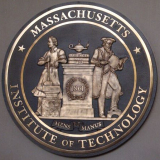
Massachusetts Institute of Technology
-
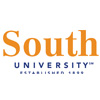
South University
-

University of West Georgia
-
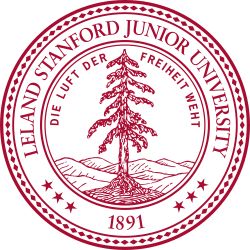
Stanford University
-
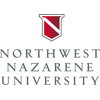
Northwest Nazarene University
-
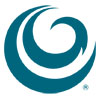
Hawaii Pacific University
-

Shorter University
-

Nova Southeastern University
-
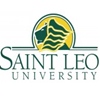
Saint Leo University
-

Mesoamerican University
-

Istmo University
-

Mariano Galvez University of Guatemala
-

Regional University of Guatemala
-

Galileo University
-

Francisco Marroquín University
-

Rafael Landívar University
-

University of the Valley of Guatemala
-

University of San Carlos of Guatemala
-

Technological Institute of Tlaxcala Plateau
-

Golfo University
-

Technological University of South Sonora
-

Technological University of Huejotzingo
-

Tizimín Institute of Technology
-

Chilpancingo Institute of Technology

